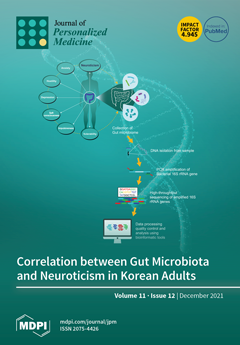The clinical response to cystic fibrosis transmembrane conductance regulator (CFTR) modulators is variable within people with cystic fibrosis (pwCF) homozygous for the F508del mutation. The prediction of clinical effect in individual patients would be useful to target therapy to those who would benefit from it. A multicenter observational cohort study was conducted including 97 pwCF (F508del/F508del), who started lumacaftor/ivacaftor (LUM/IVA) treatment before June 2018. In order to assess the associations of individual in vivo and in vitro biomarkers with clinical outcomes, we collected clinical data regarding sex, age, and sweat chloride concentration (SwCl) at baseline and after six months of LUM/IVA; the percent predicted forced expiratory volume in 1 s (ppFEV1) and the number of pulmonary exacerbations (PEx) during the three years before up to three years after modulator initiation; and the forskolin-induced swelling (FIS) responses to LUM/IVA, quantified in intestinal organoids. On a group level, the results showed an acute change in ppFEV1 after LUM/IVA initiation (2.34%, 95% CI 0.85–3.82,
p = 0.003), but no significant change in annual ppFEV1 decline in the three years after LUM/IVA compared to the three years before (change: 0.11% per year, 95%CI: −1.94–2.19,
p = 0.913). Neither of these two outcomes was associated with any of the candidate predictors on an individual level. The median number of pulmonary exacerbations (PEx) per patient year did not significantly change in the three years after LUM/IVA compared to the years before (median: 0.33/patient year, IQR: 0–0.67 before vs. median: 0/patient year, IQR: 0–0.67 after
p = 0. 268). The PEx rate after modulator initiation was associated with the PEx rate before (IRR: 2.26, 95%CI: 1.67–3.08,
p < 0.001), with sex (males vs. females IRR: 0.36, 95%CI: 0.21–0.63,
p = 0.001) and with sweat chloride concentration (SwCl) at baseline (IRR: 0.96, 95%CI: 0.94–0.98,
p = 0.001). The change in SwCl was also significant (−22.9 mmol/L (95%CI: −27.1–−18.8,
p < 0.001) and was associated with SwCl at baseline (−0.64, 95%CI: −0.90–−0.37,
p < 0.001) and with sex (males vs. females 8.32, 95%CI: 1.82–14.82,
p = 0.013). In conclusion, ppFEV1 decline after CFTR modulator initiation remains difficult to predict in individual patients in a real-world setting, with limited effectiveness for double CFTR modulator therapies. The PEx rate prior to CFTR modulator treatment initiation, sex and SwCl at baseline could be potential predictors of long-term PEx rate and of changes in SwCl after modulator initiation.
Full article






